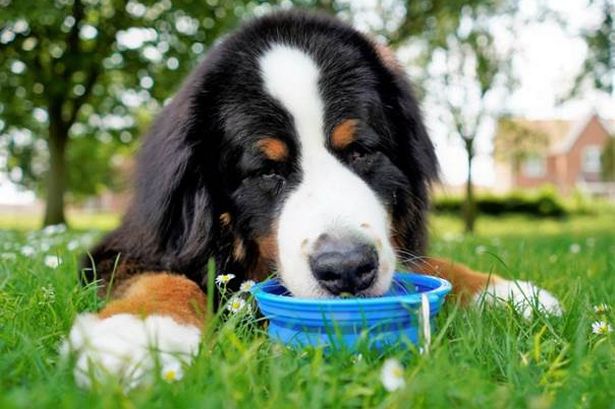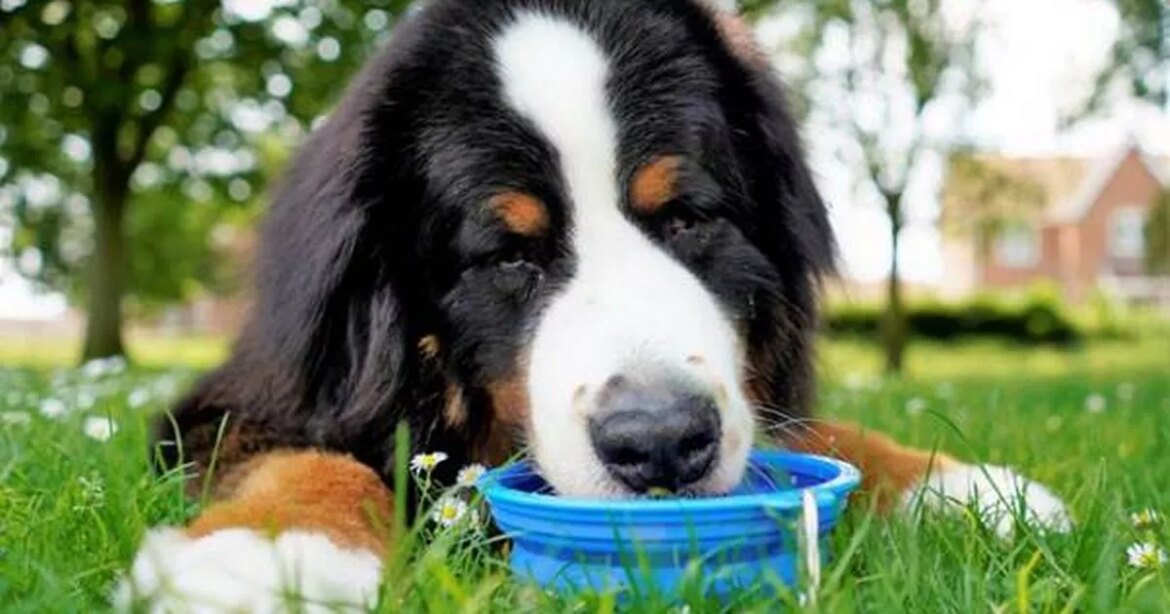Some garden products, which are heavily used at this time of year, can be incredibly dangerous for our pets A vet has shared five items which could harm your pets(Image: TrustedHousesitters)
A vet has shared five items which could harm your pets(Image: TrustedHousesitters)
With weather warming up and summer finally here, many people will be spending more time in their gardens or sprucing up their outdoor areas. But dog owners are being warned of the dangers some common garden and household items can pose to pets.
Humans tend to know when something shouldn’t be eaten, but our furry friends’ minds work differently. Dogs young and old are inquisitive and always on the lookout for a sneaky snack.
They can’t wait to get their teeth into anything and everything they deem edible, however, according to experts there are several items in your gardens which could be very dangerous for them if consumed.
Fertilisers can be dangerous for dogs, primarily if ingested or if a pet comes into contact with freshly applied granules.
Ross Hallifax, from pet insurance specialist Purely Pets, explained: “Not only can dogs experience skin and foot irritation if they walk on fertiliser, but it can cause stomach upset if ingested due to its toxic ingredients like nitrogen and phosphorus.”
But it’s not just fertiliser that can cause a problem for our pooches. Used to help control unwanted garden visitors, both dry and wet pesticides can also be dangerous and irritate their skin and digestive system if consumed.
Snail and slug bait can also be highly toxic and if consumed and can cause severe tremors.
And for those refreshing their garden shed or outdoor space this summer, be careful of paint. Both the fumes released during painting, and the product itself, can be toxic to pets due to its high-chemical content.
Gardeners should also avoid using rat poison. Unfortunately, rodenticide toxicity is common in dogs as the poison is highly toxic when consumed.
Ross added: “If you suspect your dog has been exposed to any of these toxins, try to call your vet immediately and explain what’s happened so they can help identify the best course of treatment.”
 Join the Daily Record WhatsApp community!
Join the Daily Record WhatsApp community!
Get the latest news sent straight to your messages by joining our WhatsApp community today.
You’ll receive daily updates on breaking news as well as the top headlines across Scotland.
No one will be able to see who is signed up and no one can send messages except the Daily Record team.
All you have to do is click here if you’re on mobile, select ‘Join Community’ and you’re in!
If you’re on a desktop, simply scan the QR code above with your phone and click ‘Join Community’.
We also treat our community members to special offers, promotions, and adverts from us and our partners. If you don’t like our community, you can check out any time you like.
To leave our community click on the name at the top of your screen and choose ‘exit group’.
If you’re curious, you can read our Privacy Notice.
If dogs ingest something they shouldn’t they may start to vomit, experience diarrhoea, hyperactivity and restlessness, as well as tremors, seizures, fits, or blood in their stool.
Sometimes, the effects of poison develop immediately, but other times it can take a few days to manifest.
There are some flowers that pet owners should also avoid as they could be extremely dangerous to dogs when eaten.
Despite their cheery appearance, daffodils can be highly toxic to dogs.
Diarrhea and vomiting will usually be the first signs of daffodil poisoning. In extreme cases, a dog’s heart can be affected, along with triggering long-term stomach issues.
Although adding a pop of colour to your summer garden can be tempting, it’s best to leave azaleas out of the mix. These plants can be lethal to dogs if ingested as they are rich in grayantoxin.
This can cause vomiting, respiratory issues and, in worst cases, your dog will need to be put into an induced coma.

